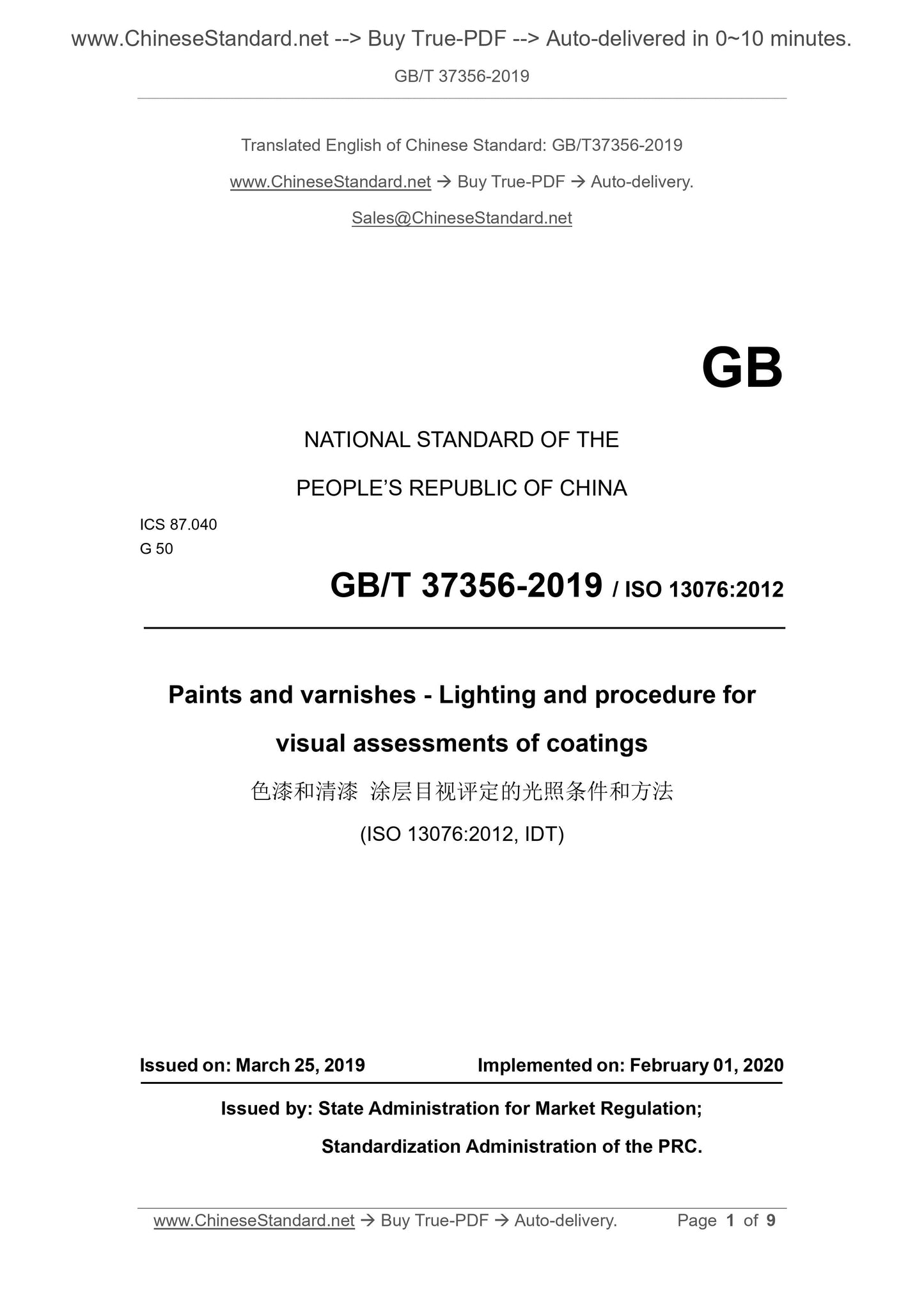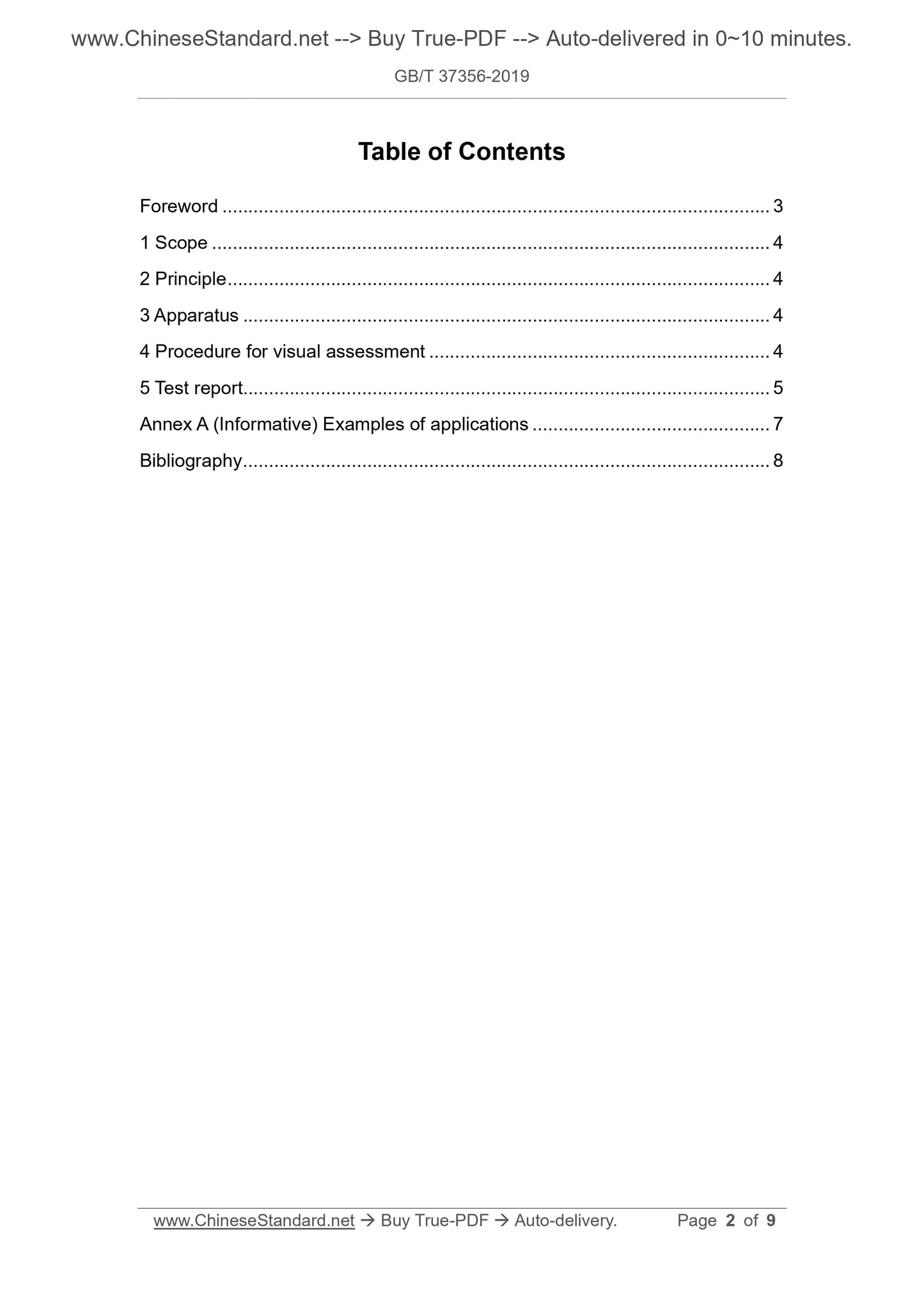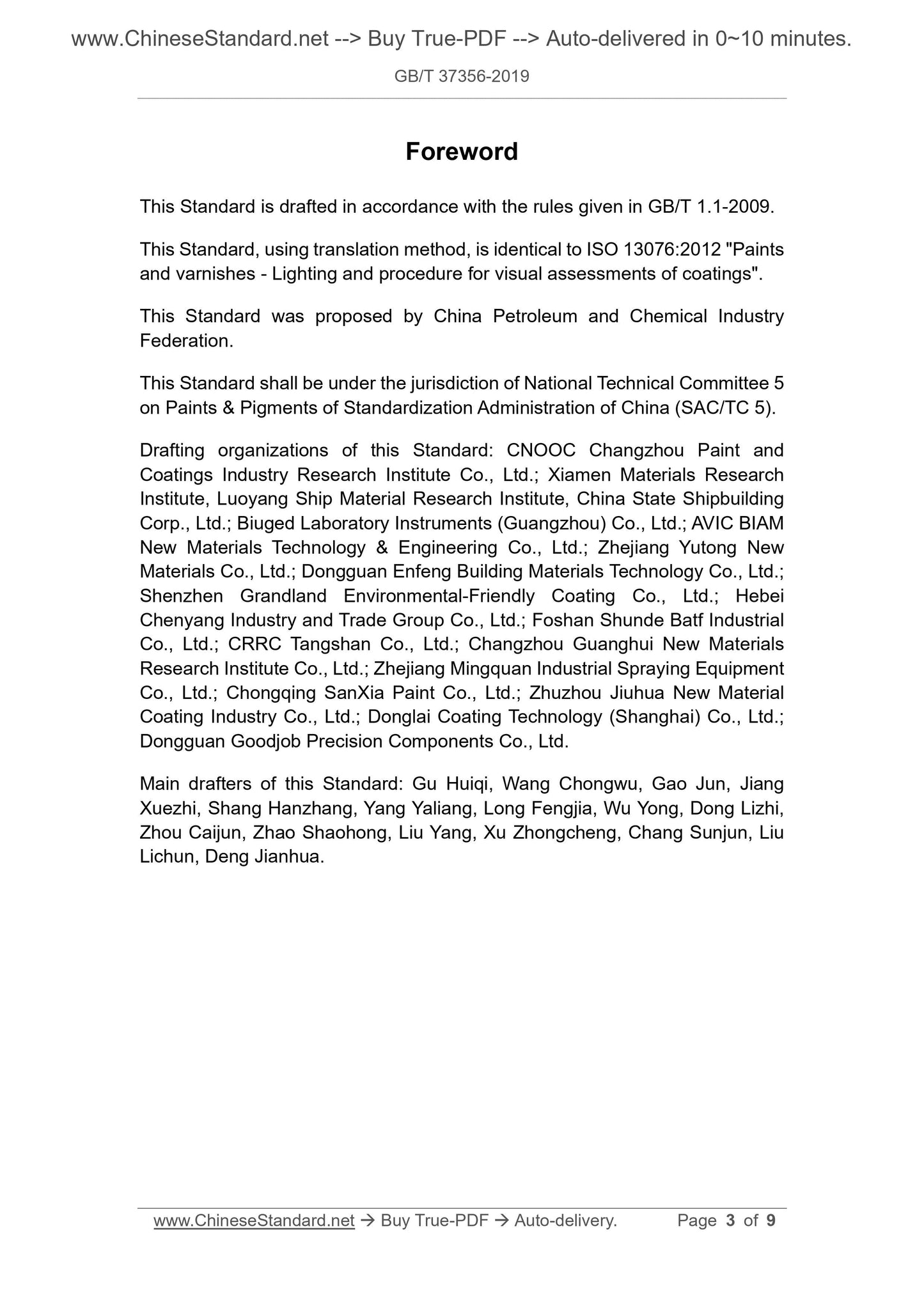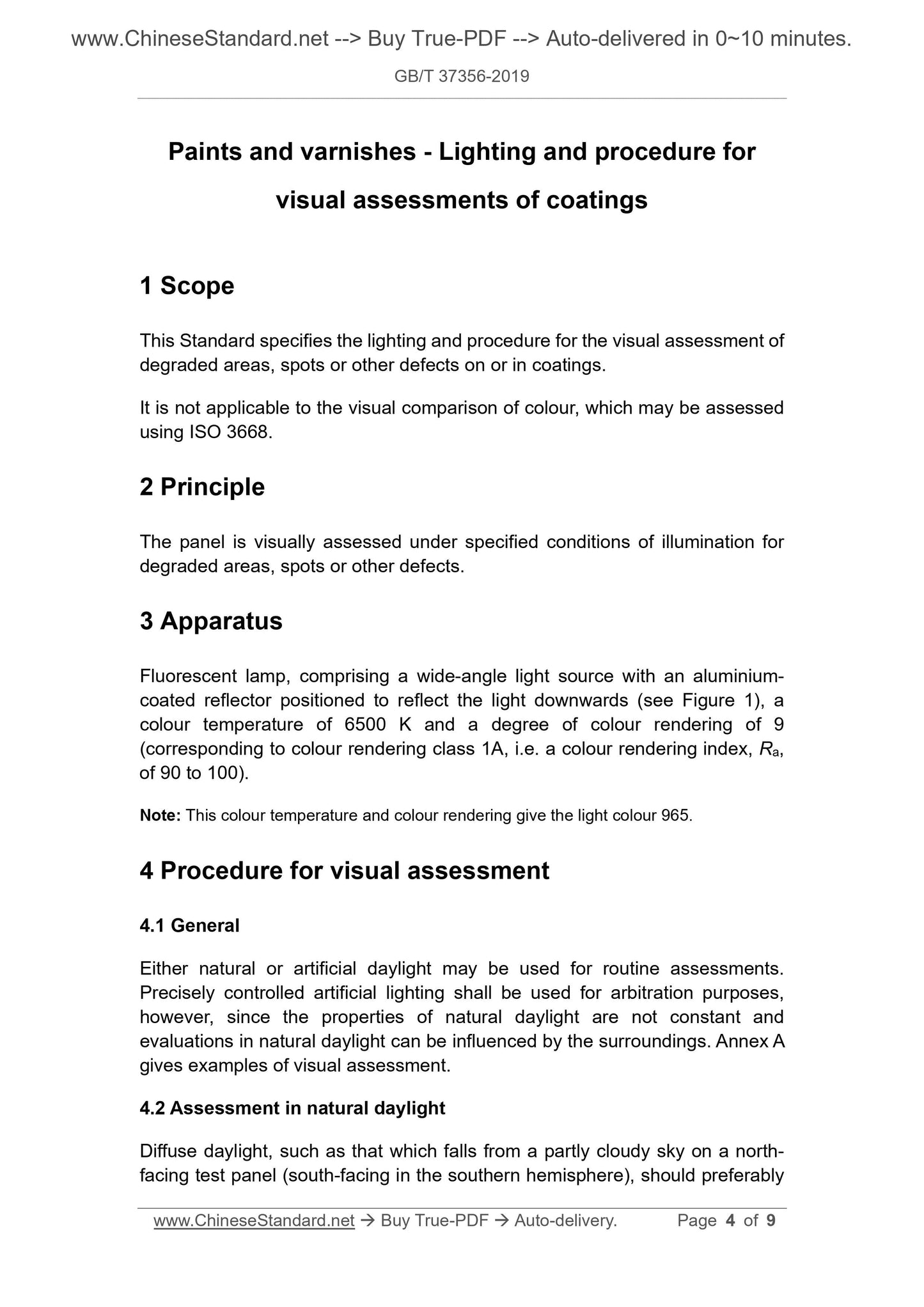1
/
of
4
www.ChineseStandard.us -- Field Test Asia Pte. Ltd.
GB/T 37356-2019 English PDF (GB/T37356-2019)
GB/T 37356-2019 English PDF (GB/T37356-2019)
Regular price
$100.00
Regular price
Sale price
$100.00
Unit price
/
per
Shipping calculated at checkout.
Couldn't load pickup availability
GB/T 37356-2019: Paints and varnishes - Lighting and procedure for visual assessments of coatings
Delivery: 9 seconds. Download (and Email) true-PDF + Invoice.Get Quotation: Click GB/T 37356-2019 (Self-service in 1-minute)
Newer / historical versions: GB/T 37356-2019
Preview True-PDF
Scope
This standard specifies the lighting conditions for visual assessment of the aging area, spots or other defects on the surface of the coating or inside the coating andmethod.
This standard does not apply to visual colorimetric, visual colorimetric can be carried out in accordance with ISO 3668.
Basic Data
| Standard ID | GB/T 37356-2019 (GB/T37356-2019) |
| Description (Translated English) | Paints and varnishes - Lighting and procedure for visual assessments of coatings |
| Sector / Industry | National Standard (Recommended) |
| Classification of Chinese Standard | G50 |
| Classification of International Standard | 87.040 |
| Word Count Estimation | 10,178 |
| Date of Issue | 2019-03-25 |
| Date of Implementation | 2020-02-01 |
| Issuing agency(ies) | State Administration for Market Regulation, China National Standardization Administration |
Share







